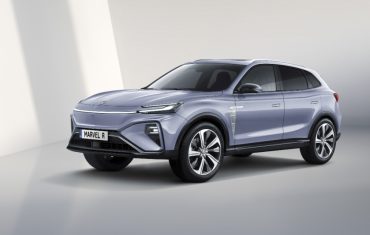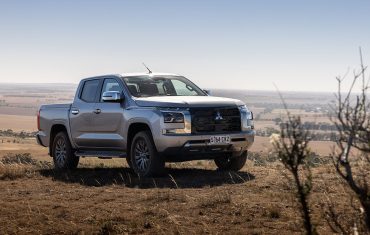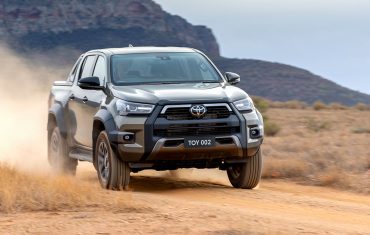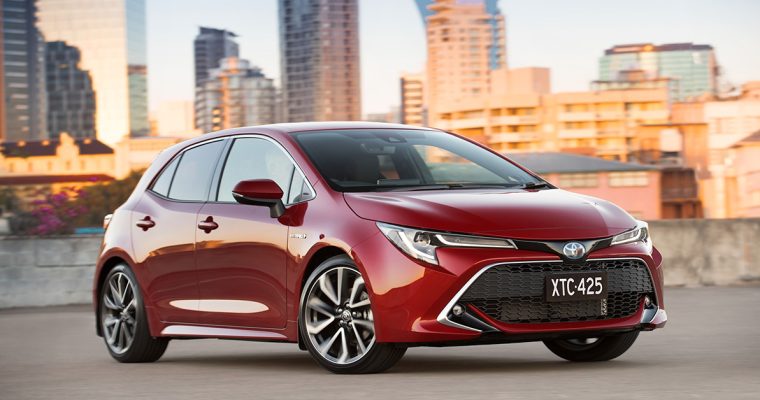
Toyota Corolla ZR Hybrid Hatch
For driversElectric cars might be the bright sparks of the global automotive industry, but there are still a few barriers in place preventing fleet operators from plugging into zero-emission mobility.
Dedicated EVs are expensive to buy, the choice is still limited, and restricted driving range and a lack of charging infrastructure in places make it a hard sell. Despite an ever-growing range of models becoming available year-on-year, demand for battery-powered vehicles has softened.
But Toyota has proven you don’t have to commit to the full EV experience to take advantage of the latest in fuel-saving battery technology thanks to its extensive range of hybrid vehicles.
The Japanese brand has been a pioneer of petrol-electric vehicles for more than 25 years, first introducing the Prius in 1998 (arriving in Australia in 2001) and, more recently, extending the technology to almost every model in its passenger car range, from its smallest city-sized hatchback, the Yaris, right the way to its large family SUV, the Kluger.
Soon, there will be no other option than a hybrid for some of its most popular vehicles, such as the Yaris, Camry sedan, RAV4 SUV and the evergreen Corolla hatchback, which has been a mainstay among fleet operators as the default small car choice for decades.

Toyota Australia has already discontinued petrol-powered versions of the Yaris, and announced in June that the Corolla Hatch and Sedan, Camry, RAV4, Kluger and Corolla Cross crossover will all exclusively be powered by hybrid powertrains with immediate effect.
It claims that 40 percent of its sales in 2024 will be hybrid vehicles and admits the move to hybrid-only passenger vehicles will help it meet the incoming New Vehicle Emissions Standard regulations due to come into effect from January 1, 2025, to safeguard the availability of its most popular diesel-powered models like the HiLux dual-cab ute, as well as the LandCruiser and all-new Prado four-wheel drives.
So, even though the Corolla has largely gone unchanged since the latest, twelfth-generation model first launched in Australia in 2018, we thought it was time to revisit the Corolla Hybrid and see how it still stacks up.
The move to a Hybrid-only Hatchback range has obviously reduced the number of variants available to just three and increased the price of entry for the Corolla, starting with the base-grade Ascent Sport that now opens the line-up at $32,110 (plus on-road costs), then moving through the mid-spec SX (at $35,260 plus on-roads) and topping-out with the flagship ZR at $39,100 (plus on-roads). The model range is mirrored in the Corolla Sedan too, which cost $32,320, $34,920 and $40,260 respectively (plus on-roads).
All versions feature the same mechanical configuration, with a lean-burning 1.8-litre petrol four-cylinder linked to an electric motor with a 6.5Ah Nickel-Metal Hydride battery and driving the front wheels through a continuously variable automatic transmission.
The combined power output for the powertrain is 103kW, which is nothing special. But the claimed average fuel consumption is just 4.2L/100km which makes it one of the most economical small cars in its class. It is even more efficient around town, taking advantage of its regenerative braking capabilities and using the electric motor more often, with a claimed urban consumption of 4.0L/100km. Despite only having a maximum capacity of 43L in the fuel tank, the Corolla Hybrid has a potential driving range of nearly 1000km between refills.
All Corolla Hatchback models score a maximum five-star ANCAP safety rating (under the 2018 protocols) and feature a comprehensive array of advanced safety systems, including autonomous emergency braking with pedestrian detection and daytime cyclist detection, adaptive cruise control, lane keeping assistance, road sign recognition and seven airbags.
They are also covered by a five-year/unlimited kilometre warranty with free roadside assistance and affordable capped-price servicing. The maintenance schedule is every 12 months or 15,000km and will cost $245 for each visit for the first five years.
The base model Ascent Sport rides on 16-inch alloy wheels and is equipped with dual-zone climate control, LED headlights, and an 8.0-inch digital touch screen with Bluetooth connectivity, AM/FM radio and a six-speaker audio system.
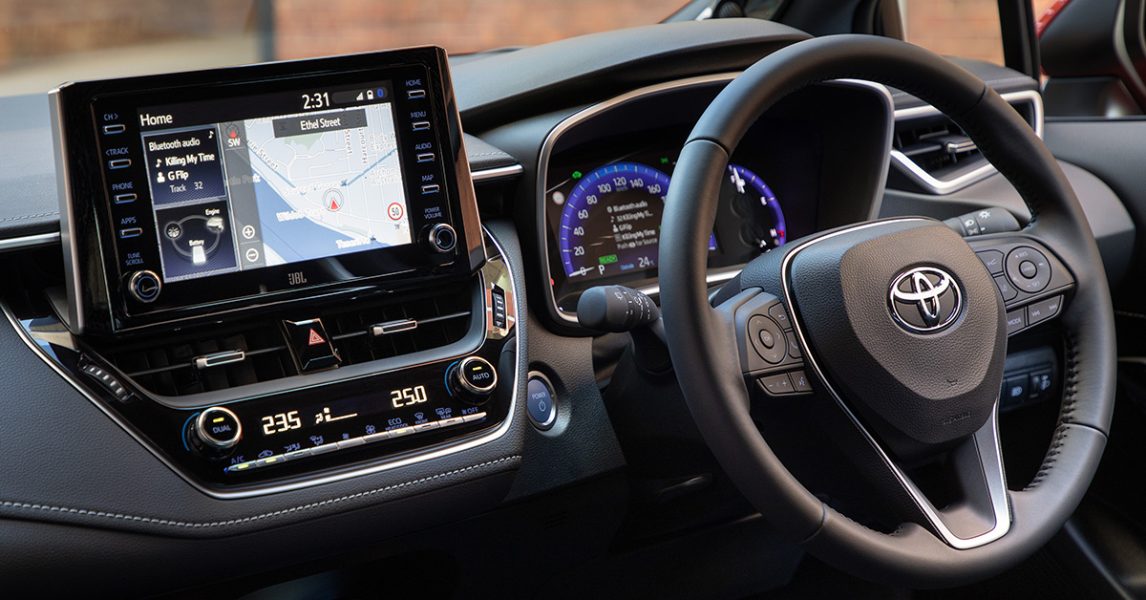
The mid-spec SX adds a premium steering wheel with multi-function controls, blind spot monitoring, wireless phone charging, keyless entry with push-button start, digital radio and embedded satellite navigation.
On top of all that, the range-topping Corolla ZR Hybrid that we’re testing here brings larger 18-inch alloys, heated sports front seats with leather and suede trim, a head-up display and digital instrument cluster, and a premium JBL eight-speaker audio system.
From the outside, the Corolla’s stylish and angular design has held up well even though the car has been on sale for almost six years and is due to be replaced within the next few years. It looks especially sporty in the two-tone black-on-silver paintwork of our test car with its larger alloy wheels filling the arches nicely.
Inside the cabin, however, it is starting to show its age with a more conservative approach to the dashboard layout. The tablet-style touchscreen pokes high from the centre console which can restrict vision across the dashboard into adjacent lanes, particularly for shorter drivers. But it is easily accessible, the menu system displays most functions and is logical and simple to use, and it’s nice to have physical controls for the climate control in a separate panel rather than integrated into the touch screen like newer rivals.
The digital instrument cluster in the ZR model adds an element of modern technology to the overall ambience, and the sports seats are both supportive and comfortable which makes light work of a long day on the road.

There are decent storage options for small items throughout the cabin, with convenient access to cupholders in the centre console, the wireless phone charging pad in front of the gear lever and a small, lidded console. Plus, there’s large bottle holders in each door pocket and a conventional glovebox that’s big enough to hold a small tablet or notepads.
The driving position has excellent adjustment to suit most drivers with great forward vision, and a generous amount of headroom. Those in the back are little more compromised as the roof line starts to slope downwards from the centre of the car, and the seatbacks don’t offer the same degree of support, but the rear doors open wide for easy access and there’s enough space for two adults, or three small kids, to travel in relative comfort.

The Corolla Hatch doesn’t have the biggest cargo space in its class, with a total volume of 333L, but it is easily accessible thanks to the large aperture of its hatchback opening and low sill height.
As for how it drives, the ZR Corolla Hybrid feels way ahead of its time. The powertrain is sublime in how it shifts seamlessly between its electric motor and petrol engine and uses the CVT transmissions to deliver effortless acceleration. It’s not a hot hatch by any stretch of the imagination, but it is a slouch away from a standstill.
The two motors work beautifully together around town, the petrol engine switching off under deceleration and chiming in when needed without any interruption or prominence in its arrival.
And the fuel consumption figures are real. During our test drive period, which consisted of more than 800km around town and out on the open road, we beat Toyota’s claim and recorded an average of 4.1L/100km without even trying.
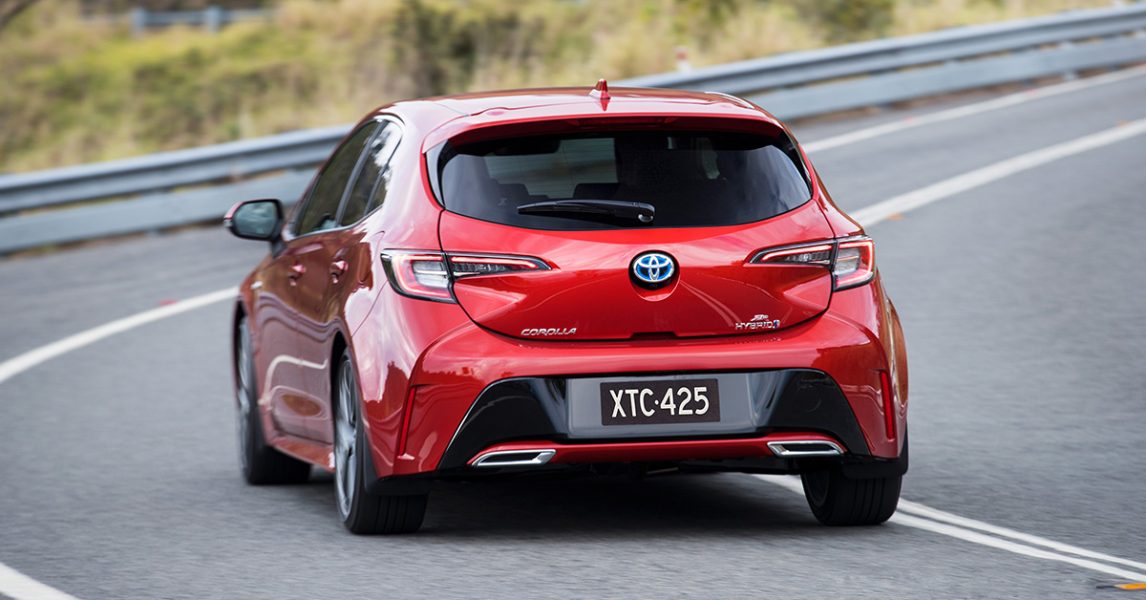
The rest of the package adds to the sophisticated nature of how the Corolla Hybrid Hatchback drives. The steering is light and yet positive, the suspension is supple over bumps and rough road surfaces while also providing sure-footed handling through the bends, and the brakes are strong with a natural pedal feel.
Sure, it’s not an exciting car to drive. But the Corolla Hybrid Hatch is an extremely pleasant machine that rewards those behind the wheel in a different way and, more importantly, the bean counters thanks to its low running costs.
For more information on the transition to zero-emission mobility, contact SG Fleet today.
 Driving Insights
Driving Insights

